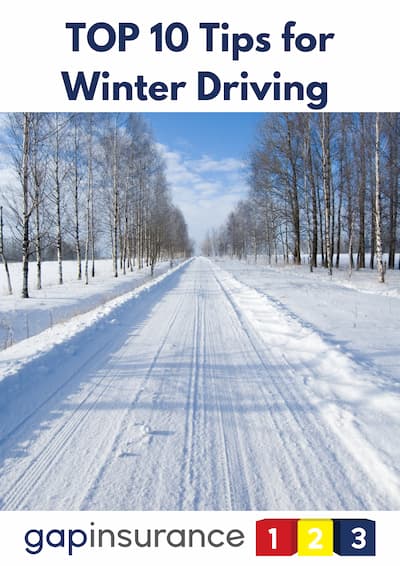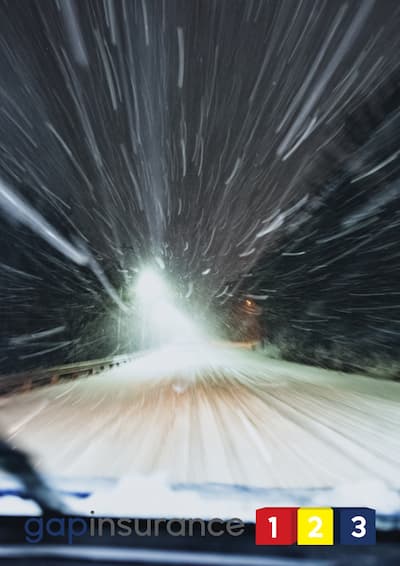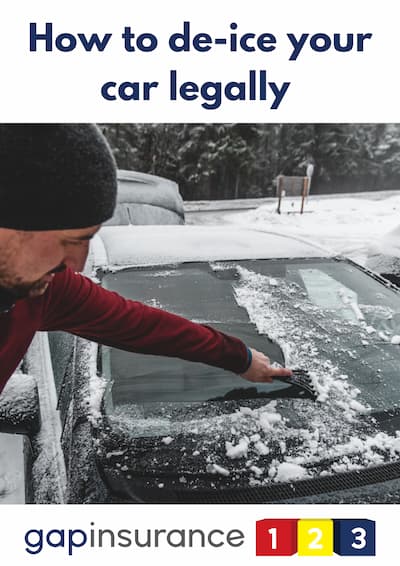Call Monday-Friday 9am - 6pm Closed Saturday & Sunday
Please select some policies.



Need Help? Calling from a mobile please call 0151 647 7556
0800 195 4926 / 0151 647 7556Do you have a question? or need help?
Call Monday-Friday 9am - 6pm Closed Saturday & Sunday,
Winter is coming. And with it, the potential for heavy rain, high winds, snow, ice and generally cold weather. The UK winter can be especially treacherous to drivers who are not prepared. This blog post will provide 10 top tips that will help you stay safe on the roads in the winter months. 
We hope you find our winter driving advice useful. If you think we have missed any more winter driving tips please feel free to enter them in the comments below.
Pay particular attention to the key safety areas of your vehicle.
Using this make sure they have enough ground left & have good overall condition as they don't leak, crack or bulge. Ensure that the tyres are properly inflated at the recommended pressure level and keep a monthly pressure record. Using tyres pressure sensors, resets the pressure monitoring device after the fuel is emptied out.
Have you considered winter tyres? Certainly worth purchasing regardless of snow or no snow this time of year. Compared to the conventional summer tyres type, where traction is far less effective on the snow and cold tarmac, winter tyres also provide a higher grip on snow. Winter tyres can also improve snow-mobile vehicle performance by being very durable when driving on cold, icy roads.
If you live in an area where you may not see long periods of cold weather, you may also consider all season tyres as a balanced alternative.
Consider adding snow chains or snow socks to your tyres if you are driving through heavy snow, for more grip. Ensure you check your car insurance to see if this is allowed with your cover.
Make sure your tyre pressures are correct by checking them regularly. A sudden drop in temperature can lower air pressure in your tyres so check and do not assume they are right.
As well as tyre pressures please remember to check your tyre tread depth also. Grip in poor weather is essential, and it is easy to lose control in adverse weather conditions.

Maintain water to a proper level to ensure visibility through the windshield, regardless of the weather. Wet weather does not necessarily mean the rain, snow and ice hitting your windscreen is free from dirt.
Keep a water-filled bottle in your 'winter kit' just in case you run short when driving.
Check regularly to ensure lights are in good functioning condition as well as in good working order, including fog and brake lights.
Ensure your lights are clean from dirt at all times. Some cars have washers for your headlights, some do not. Dirty lights will lower visibility.
Check your windscreen wipers are clear of dirt, debris and are not damaged or cracked. Any residue or damage will impair their cleaning abilities. Replace worn wiper blades if necessary.
 Ensure your coolant has antifreeze added
Ensure your coolant has antifreeze added
Antifreeze is a low-cost additive that will help ensure your engine does not freeze solid in extreme cold weather.
The cost of a coolant change, to ensure antifreeze is mixed in, is much cheaper than swapping a frozen and cracked engine for a new one!
On a traditional car an aging battery can be tested by a sudden drop in temperature. You can link your battery to a charger to provide a regular overnight trickle charge to keep the cells topped up.
This will help you avoid any unexpected stops and make sure that you can enjoy your winter driving without any interruptions. Stopping for fuel only elongates your journey and gives you a potentially tricky exit from a petrol station to negotiate.
If you're driving an electric vehicle, make sure to plan ahead and charge up before hitting the road. There are a number of charging stations along popular routes, so you should be able to find one no matter where you're going. But it's always a good idea to do some research ahead of time to make sure you're fully charged before setting off on your trip.
Although fully electric cars are still fairly new on the UK roads, there are some stories that the range (the maximum distance you can travel on your charge) can reduce in colder conditions. Worth planning your charging requirements with that in mind.
If something does happen while you're on the road, it's important to stay calm and take action. Having supplies like:
in your emergency kit can help make the situation easier to handle. Make sure to keep this kit stocked so you're prepared.
If you're stranded on the side of the road, put your hazard lights on to warn other drivers and stay in your car (if it is in a safe place, and it is too cold to stay outside). If it's safe to do so, try to move your car off the road and onto the shoulder. If you need to leave your vehicle, make sure to take all of your belongings with you and be aware that there are dangers.

Most modern cars are equipped with an array of safety features to help drive in all conditions. Safety features like anti-lock brakes and traction control can help with better grip, avoid wheel spin or wheel lock-ups (skids) in winter driving conditions.
However, this should not lull you into a false sense of security.
In winter driving conditions means you may need to adapt your driving style to counter issues that can occur.
You should
Be aware of the road conditions at all times and be prepared for anything. You may need to stop or slow down if you come across a patch of ice, large puddles that could be hiding black ice underneath them, fallen branches blocking your path, or deep snow — there are many things that can happen and it’s important not to let yourself get too complacent.
If you know that an area is prone to icy conditions, slow down as you approach it and take care when driving through it. In particularly bad weather, consider pulling over until the conditions have improved. Remember safety first!
Be especially careful on corners and hills, as these are often where accidents happen. If your car starts to slide, don’t brake suddenly or turn the wheel too sharply; instead, ease off the accelerator and steer in the direction you want the car to go.
When water is shallow, drive slowly to avoid splashing against the engine.
If you are unable to see where your car or motorcycle wheels are going, do not continue driving. Turn around and find an alternative route. If possible, contact someone who can help guide you through hazardous conditions such as snowfall or ice on roads. You should modify your driving if you see snowfall or ice on the road.
 If you are driving on a road where ground water is present, monitor the surface of your vehicle's tarmac for signs that the car or motorcycle might slip. If you notice any sign of slippage, avoid using full power to accelerate as this could cause problems with wheels spinning out of control. You should also reduce both speed and steering.
If you are driving on a road where ground water is present, monitor the surface of your vehicle's tarmac for signs that the car or motorcycle might slip. If you notice any sign of slippage, avoid using full power to accelerate as this could cause problems with wheels spinning out of control. You should also reduce both speed and steering.
You can also try putting sand or kitty litter under the tyres, if you have it. The small grains can help your car get traction.
If you do need to call for help, be sure that the phone is charged before trying to make a call. And stay in your car until help arrives, to keep warm.
If you live in a region particularly prone to heavy snow, you may want to consider investing in snow chains or snow socks. These can be invaluable coping with deeper snow fall.
Having adequate breakdown cover could be vital if you get stuck in unfavourable winter driving conditions. Ultimately roadside recovery will be your fall back option if you are unable to drive any further due to a breakdown or road conditions.
Driving in sunny conditions can be every bit as challenging when driving in winter, as driving in heavy snow or strong winds. Driving in the low winter sun can provide poor visibility as you can be dazzled by the brightness of the sun. Also, when the sun is out this could come after a clear night and provide icy weather conditions.
Reacting to changes in traffic speeds in these conditions can be difficult. These can provide bigger challenges in traffic jams where many accidents occur where drivers cannot judge the stopping distances and road surface conditions.
Adjust your driving to 'winter mode' allowing for greater stopping distance from other road users.

Did you know you could break the law and invalidate your motor insurance by de-icing your car?
If you leave your engine running and the blowers on the screen then if you are on a public highway then this could break the law. Doing this on a public road breaks the Road Vehicles (Construction and Use) Regulations 1986, which reinforce rule 123 of the Highway Code.
Leaving the engine running simply to warm the car and de-ice the windscreen increases air pollution. This can lead to a £20 spot fine, or more, depending on your local authority.
However, this only applies on the public highway. You can do this on private land, like your driveway, but if you leave you car unattended, even for a short period, then you could be invalidating your motor insurance. This could happen where you leave the car to go back in the house and someone steals the car. Because you have left your car unattended your motor insurer may say you have been negligent and not pay out any settlement. This could also impact any Gap Insurance you have in place also.
Remember it is important that you clear your vehicle of ice so you have full visability. This means the windscreen, windows, rear screen and mirrors. Driving a car without doing this could see a £60 fine imposed. A can of de-icer spray, and/or a scraper are always your best bet.
So there you have it. Our simple top 10 tips for driving in winter. Driving in snow and ice, or any other extreme conditions can be a challenge. However, we hope you get some help from our winter driving advice.
Above all else, please take care and stay safe. And if the weather is that bad, avoid travelling at all unless it is absolutely essential.